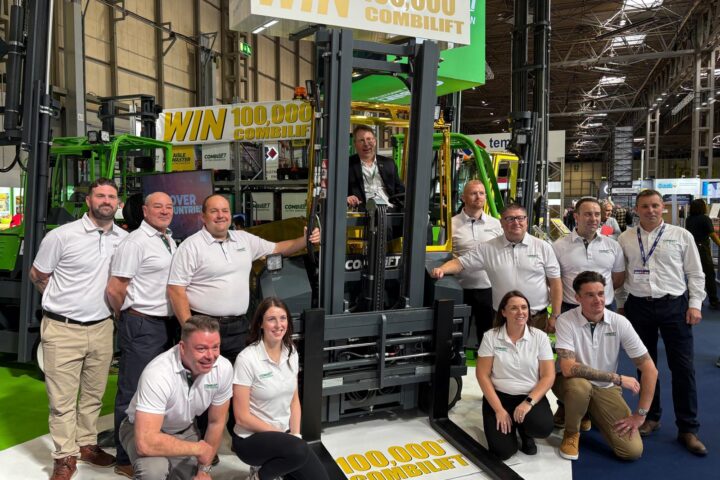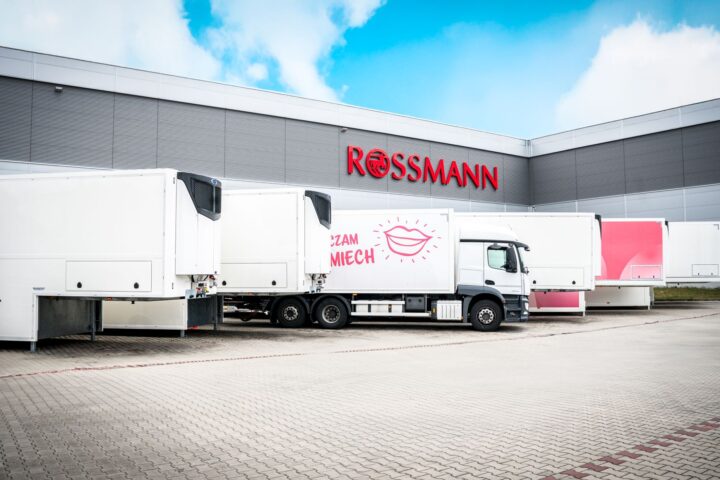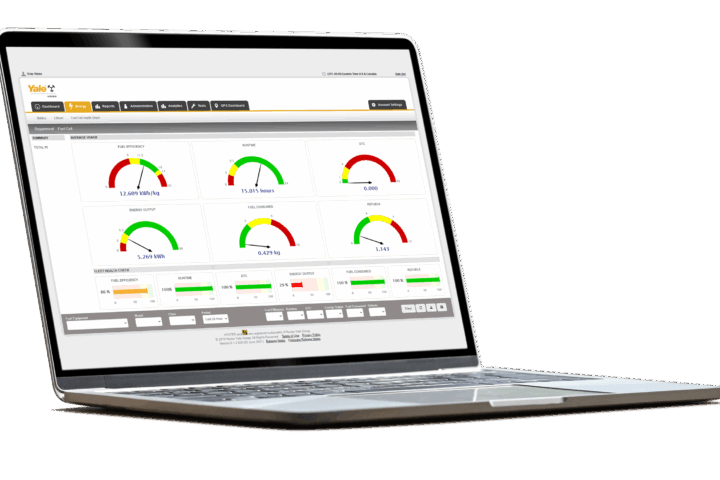As Freightos’ Chief Strategy Officer, I’ve had the privilege of witnessing firsthand how the logistics industry has transformed since COVID-19 disrupted supply chains worldwide. What’s become increasingly clear is that there are no more black swans in global logistics. Everything should be expected and planned for.
Disruptions have become the norm, rather than the exception, and the only organizations that can thrive in this new reality are those with the right tools.
Visibility Through Volatility
Mitigate supply chain disruption by synchronizing tendering, rate validation, and freight bookings.
The Inspiration Behind Freightos Enterprise
A little over a year ago, my team and I embarked on an extensive listening tour, sitting down with nearly one hundred enterprise shippers and BCO senior executives from the supply chain and logistics sectors. These weren’t casual conversations – they were deep dives into the real challenges keeping supply chain leaders awake at night.
One consistent theme emerged from these discussions: the need to move away from disconnected logistics technology silos toward a much more connected ecosystem.
The fragmentation of data and processes was creating blind spots, inefficiencies, and ultimately, vulnerability to disruption.
Enterprise shippers are moving quickly towards a fully integrated ecosystem to ensure their supply chains are resilient and comprehensive by consolidating tools and ensuring integration instead of silos of tech. They need to make decisions in real-time or near real-time, as the environment around them rapidly evolves. The days of quarterly reviews and annual procurement cycles are giving way to a much more dynamic, responsive approach to supply chain management.
“Having everything connected – from market intelligence to tender procurement to actual bookings – transforms how shippers operate. Now, teams can focus on strategy, instead of chasing information across multiple systems and endless email chains, saving time and money, and getting goods on shelves with less overhead and more reliability,” says Paolo Galli, VP Group Logistics Operations at Electrolux.
This insight wasn’t merely theoretical.
The Red Sea crisis demonstrated how quickly shipping routes can be compromised, forcing immediate rerouting decisions. Our data showed that over 90% of enterprise shippers had to reroute shipments during this period, with an average cost increase of 35% per container.
Evolving geopolitical challenges between major economies have shown how a single policy change can dramatically alter the economics of established supply chains.
When a single tweet can change tariffs on global trading partners, or when conflict in the Middle East impacts shipping lanes, logistics teams need comprehensive visibility and control, not in weeks or days, but in hours.
The Problem with Fragmented Solutions
The logistics technology space is undeniably crowded.
Since COVID-19, we’ve seen enormous investment in this sector, with numerous specialized solutions emerging. Many of these tools are excellent at solving specific problems – whether it’s procurement automation, rate management, or market intelligence. However, this specialization has created its own challenges.
In our conversations with enterprise logistics and supply chain leaders, we consistently heard about the friction created by managing multiple systems that don’t communicate effectively with each other. One Fortune 100 retailer described maintaining seven different logistics platforms, each requiring separate logins, data management, and training. The inefficiency was staggering, but more concerning was the inability to make holistic decisions when critical information was scattered across disconnected systems.
Our analysis of enterprise logistics operations revealed that teams using manual processes spend an average of 22 hours per week on data entry and validation tasks. That’s over 1,100 hours annually that could be redirected to strategic initiatives. More concerning, we found that manual processes have an average error rate of 4-6%, which may seem small until you consider the impact on a $50M+ freight spend.
Our approach with Freightos Enterprise is fundamentally different. The core differentiator when you’re thinking about a crowded logistics technology market is that we’re not focusing on providing just one niche solution or silo. We’re talking about solving for the entirety of the procurement lifecycle – from strategic sourcing through execution and analysis.
The Data Advantage in a Volatile World
When I talk with supply chain leaders, I often pose this question: If you didn’t have real-time data in an environment changing hour-by-hour, how could you possibly make decisions that ensure your supply chain remains intact?
The reality is that most enterprises are making critical logistics decisions based on outdated or incomplete information. Rate sheets become obsolete almost as soon as they’re negotiated.
Rate sheets become obsolete almost as soon as they’re negotiated. Market conditions change faster than traditional reporting cycles can capture, and the complexity of global supply chains means that important signals are often lost in the noise.
At Freightos, we’ve invested heavily in providing near real-time or real-time data to our customers. Our global network of carriers, forwarders, and shippers generates millions of data points daily, creating an unparalleled view of the logistics marketplace.
The Freightos Baltic Index (FBX) has become the industry standard for container freight rate tracking, providing transparency in a historically opaque market. Similarly, our Freightos Air Index (FAX) offers the same level of insight for air cargo rates.
For example, when recent tariff wars began, one Fortune 500 company we work with immediately needed to evaluate its total cost of ownership across different regions. By taking real-time market intelligence data from our Terminal module, as fresh as an hour ago, they were able to map out what would happen to their total cost of ownership for each origin and destination within days.
This visibility allowed them to start making real-time adjustments with their LSPs, shifting volume between origins to minimize the impact of new tariffs. Within weeks, they had reconfigured their supply chain to reduce the tariff impact by over 40%, saving millions while maintaining service levels to their customers.
Another global retailer used our platform during the Red Sea crisis to identify alternative routing options and secure capacity ahead of competitors. While others were scrambling to respond, they had already secured the capacity they needed at rates 15-20% below what the market would soon bear. Our data showed that spot rates on Asia-Europe routes increased by over 70% during this period, but our customers who acted quickly based on Terminal insights secured capacity at just 25-30% above pre-crisis levels.
Moving Beyond Excel-Based Workflows
Our research shows that 73% of enterprise organizations still rely on Excel spreadsheets to manage procurement and booking workflows. I get it – Excel is remarkable in many ways and practically runs the world. But it simply cannot provide the flexibility, resilience, and accuracy that today’s environment demands.
I’ve seen logistics teams spend countless hours manually updating spreadsheets, only to find their data is already outdated by the time they finish. When rates are changing daily and capacity is fluctuating, this approach is simply unsustainable. The manual nature of spreadsheet-based processes also introduces a significant risk of errors – a misplaced decimal or incorrect formula can lead to costly mistakes.
Freightos Enterprise standardizes these workflows while ensuring that existing processes aren’t broken. We understand that change management is challenging, especially in large organizations with established ways of working. Our approach is to digitize and enhance your existing processes, not force you to adopt an entirely new methodology.
We eliminate data delays and inaccuracies, enabling logistics teams to focus on strategic decision-making and relationship management, where human expertise truly shines.
Take Control of Your Logistics Future
Automate tendering, benchmark rates instantly, and book freight in one solution.
The Future of Integrated Logistics
As I look ahead, integration will become increasingly crucial. The future belongs to connected platforms that can bring together disparate data sources and processes into a coherent whole. This isn’t just about technology integration – but about enabling better collaboration between different teams within your organization and with your external partners.
Our strategic focus at Freightos is providing greater effectiveness in integrating not only our platform with enterprises’ current processes, but also making it easier for an enterprise to integrate our solutions across their tech ecosystem. This ensures that visibility isn’t siloed but available organization-wide.
We’ve invested heavily in API capabilities, pre-built connectors for major ERP and TMS systems, and flexible data exchange options to ensure that Freightos Enterprise can work seamlessly withyour existing technology landscape. We’re also exploring advanced applications of AI and machine learning to help identify patterns and opportunities that might otherwise go unnoticed.
The goal isn’t just to provide better tools for logistics professionals, but to elevate the strategic importance of logistics within the enterprise. When you can demonstrate the impact of logistics decisions on overall business performance with clear, data-driven insights, you transform logistics from a cost center to a strategic advantage.
A Holistic Industry Approach
Freightos is dedicated to providing a holistic solution that fosters seamless collaboration across shippers, forwarders, and carriers. Our ecosystem approach offers insights into the logistics value chain, enabling us to tailor solutions to immediate needs and promote partner collaboration.
The Freightos platform connects over 10,000 forwarder offices worldwide and integrates with 100+ leading carriers, creating the world’s largest digital freight network. This reach provides unparalleled connectivity and visibility across the global logistics landscape.
This approach is vital as the industry continues its digital evolution. By connecting all stakeholders on WebCargo, 7LFreight, and now Freightos Enterprise, we’re ensuring that the entire logistics ecosystem has access to accurate, high-resolution, low-latency data for better decision-making in an unpredictable world.
The challenges you face as a supply chain and logistics professional are real and growing more complex by the day. According to our recent survey of enterprise logistics leaders, 78% report that market volatility has significantly increased in the past 24 months, while 82% say they lack confidence in their ability to respond quickly to major disruptions.
We built Freightos Enterprise because we believe you deserve better than disconnected systems and outdated data. You deserve a solution that brings everything together, giving you the power to navigate today’s challenges and tomorrow’s uncertainties with confidence.
As you evaluate your logistics technology strategy, consider not just the capabilities of individual tools but also how they work together to create a coherent, end-to-end solution. The future belongs to integrated platforms that eliminate friction, enhance visibility, and enable faster, better decisions.
Freightos Enterprise represents our vision for that future – a comprehensive solution that addresses the entire procurement lifecycle, from strategic sourcing through execution and analysis. We’re committed to continuing our investment in this platform, expanding its capabilities, and ensuring it remains at the forefront of logistics innovation.
The world of global logistics will continue to evolve, bringing new challenges and opportunities. With Freightos Enterprise, you’ll be equipped not just to respond to these changes but to anticipate them and turn them to your advantage.
The current uncertainty surrounding the trade war is likewise spurring demand for visibility and speed – this time around, tariff exposure and alternative sourcing options. The companies that thrive will be those that can quickly assess their exposure, model different scenarios, and execute changes to their logistics networks with confidence and precision.
Shaping Global Supply Chains Through 2026 and Beyond
As we look to 2026 and beyond, I believe we’ll see even greater convergence between logistics technology and broader supply chain management. The artificial boundaries between procurement, operations, and intelligence will continue to dissolve, creating truly integrated platforms that provide end-to-end visibility and control.
At Freightos, we’re committed to leading this transformation. Our vision is to create a world where global trade is as simple, transparent, and efficient as possible – where logistics professionals have the tools they need to navigate complexity with confidence and where enterprises can turn their supply chains into competitive advantages.
I invite you to join us on this journey. Whether you’re struggling with the limitations of your current systems, looking to gain better visibility into your logistics operations, or seeking to transform your approach to procurement, Freightos Enterprise offers a comprehensive solution designed for the challenges of today and tomorrow.
The future of logistics is integrated, data-driven, and responsive. With Freightos Enterprise, that future is here today.
Freight forwarders and enterprise shippers looking to learn more about Freightos Enterprise click here for additional information or book a demo here.
The Modern Tech Stack for Enterprise Shippers
Leverage real-time insights and streamlined workflows for end-to-end freight success.












